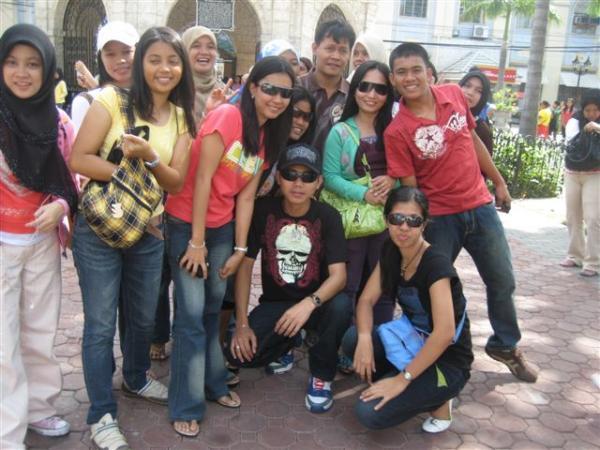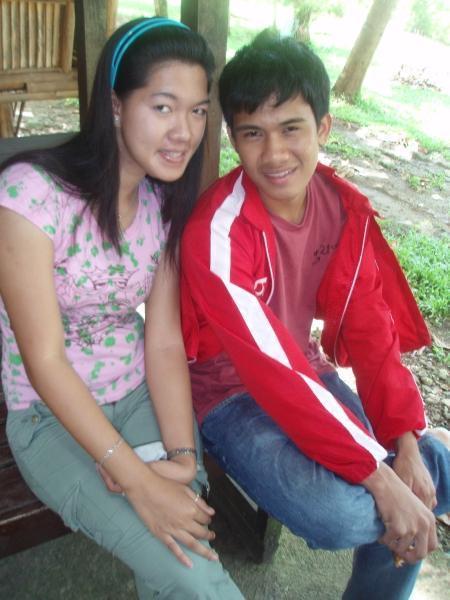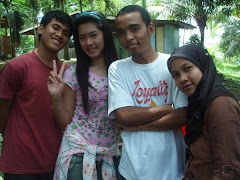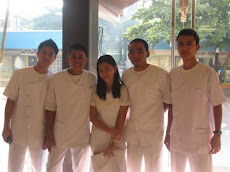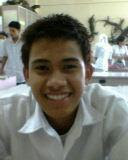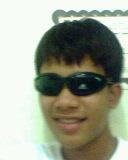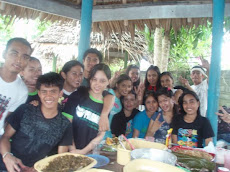Thursday, March 18, 2010
Tuesday, March 16, 2010
Julia makes him cum so fast - Pornhub.com
This summary is not available. Please
click here to view the post.
Tuesday, December 8, 2009
smb vs sta.lucia
Defense-minded Realtors no match for rampaging Beermen
04 Dec 2009Not even the team touted as one of the top defensive powers in the KFC-PBA Philippine Cup was good enough to stop the San Miguel juggernaut on its track.The Beermen poured it all in a big third quarter surge for a 110-94 rout of the Sta. Lucia Realtors that kept the team's winning streak going Friday night at the Araneta Coliseum.Holding on to a slim 47-46 halftime edge, the Beermen came out like a house on fire to start the second half, outscoring the stunned Realtors, 33-19, in a 12-minute span.That was enough for the league's hottest team to open the game wide-open in the fourth and coast to its ninth straight win after losing its first two matches in the All-Filipino tournament.Keeping its spot in second place, San Miguel now primes itself up for an expected explosive showdown against league-leader Alaska (9-1) next week."That would be a big test for us," said Dondon Hontiveros, who paced San Miguel with 21 points (9-of-13), of the Beermen's coming match up with the Aces.Mike Cortez added 14 points and had a big part in that searing third period San Miguel breakaway. Lordy Tugade and Danny Seigle each had 13 for the Beermen, who also got 12 and 11, respectively from Arwind Santos and Dorian Pena.The Beermen led by as many as 21 points, 108-87.Sta. Lucia fell to an even 5-5 card despite getting 20 points from Bitoy Omolon. - GMANews.TVScores:San Miguel 110 - Hontiveros 21, Cortez 14, Tugade 13, Seigle 13, Santos 12, Pena 11, Villanueva 9, Miranda 7, Pennisi 6, Eman 2, Racela 2, Holper 0.Sta. Lucia 94 - Omolon 20, Reyes 17, Williams 15, Espinas 14, Yeo 13, Daa 6, Aquino 4, Mendoza 3, Misolas 2, Urbiztondo 0, Pacana 0.Quarter scores: 29-23, 47-46, 80-65, 110-94.
04 Dec 2009Not even the team touted as one of the top defensive powers in the KFC-PBA Philippine Cup was good enough to stop the San Miguel juggernaut on its track.The Beermen poured it all in a big third quarter surge for a 110-94 rout of the Sta. Lucia Realtors that kept the team's winning streak going Friday night at the Araneta Coliseum.Holding on to a slim 47-46 halftime edge, the Beermen came out like a house on fire to start the second half, outscoring the stunned Realtors, 33-19, in a 12-minute span.That was enough for the league's hottest team to open the game wide-open in the fourth and coast to its ninth straight win after losing its first two matches in the All-Filipino tournament.Keeping its spot in second place, San Miguel now primes itself up for an expected explosive showdown against league-leader Alaska (9-1) next week."That would be a big test for us," said Dondon Hontiveros, who paced San Miguel with 21 points (9-of-13), of the Beermen's coming match up with the Aces.Mike Cortez added 14 points and had a big part in that searing third period San Miguel breakaway. Lordy Tugade and Danny Seigle each had 13 for the Beermen, who also got 12 and 11, respectively from Arwind Santos and Dorian Pena.The Beermen led by as many as 21 points, 108-87.Sta. Lucia fell to an even 5-5 card despite getting 20 points from Bitoy Omolon. - GMANews.TVScores:San Miguel 110 - Hontiveros 21, Cortez 14, Tugade 13, Seigle 13, Santos 12, Pena 11, Villanueva 9, Miranda 7, Pennisi 6, Eman 2, Racela 2, Holper 0.Sta. Lucia 94 - Omolon 20, Reyes 17, Williams 15, Espinas 14, Yeo 13, Daa 6, Aquino 4, Mendoza 3, Misolas 2, Urbiztondo 0, Pacana 0.Quarter scores: 29-23, 47-46, 80-65, 110-94.
smb vs burger king
San Miguel extends winning run to 8
29 Nov 2009Arwind Santos came off the bench to score 27 points, grab 12 rebounds, block 6 shots and issue 4 assists in another dominating performance as the San Miguel Beermen recorded a 100-85 win over the Burger King Whoppers in the 2009-2010 KFC PBA Philippine Cup at the Ynares Center in Antipolo City.Thw win is San Migue'l 8th straight after starting the season with 2 straight losses.“We’re just trying to win as many games as we could to offset the injuries to our key players,” said San Miguel Beer head coach Sito Tanquingcen. “I think our defense was key tonight. Defense should always be constant for us while we await the return of Danny I (Ildefonso) and J-Wash (Jay Washington.”Lordy Tugade notched a double-double with 20 points and 10 rebounds for the Beermen while Dennis Miranda added 14 points, Olsen Racela 12 and Jonas Villanueva 11 with 7 assists.Richard Yee led the Whoppers with 14 points. Carlo Sharma, Mark yee and Ronnie Matias also finished in double figures for Burger King.Scores:San Miguel 100 - Santos 27, Tugade 20, Miranda 14, Racela 12, Villanueva 11, Pena 7, Hontiveros 5, Pennisi 3, Eman 1, Cortez 0, Calaguio 0.Burger King 85 - Yee R, 14, Sharma 12, Yee M 11, Matias 10, Belga 8, Lanete 8, Buenafe 8, David 6, Williams 4, Quinahan 4.Quarterscores: 18-22, 45-44; 72-67; 100-85
29 Nov 2009Arwind Santos came off the bench to score 27 points, grab 12 rebounds, block 6 shots and issue 4 assists in another dominating performance as the San Miguel Beermen recorded a 100-85 win over the Burger King Whoppers in the 2009-2010 KFC PBA Philippine Cup at the Ynares Center in Antipolo City.Thw win is San Migue'l 8th straight after starting the season with 2 straight losses.“We’re just trying to win as many games as we could to offset the injuries to our key players,” said San Miguel Beer head coach Sito Tanquingcen. “I think our defense was key tonight. Defense should always be constant for us while we await the return of Danny I (Ildefonso) and J-Wash (Jay Washington.”Lordy Tugade notched a double-double with 20 points and 10 rebounds for the Beermen while Dennis Miranda added 14 points, Olsen Racela 12 and Jonas Villanueva 11 with 7 assists.Richard Yee led the Whoppers with 14 points. Carlo Sharma, Mark yee and Ronnie Matias also finished in double figures for Burger King.Scores:San Miguel 100 - Santos 27, Tugade 20, Miranda 14, Racela 12, Villanueva 11, Pena 7, Hontiveros 5, Pennisi 3, Eman 1, Cortez 0, Calaguio 0.Burger King 85 - Yee R, 14, Sharma 12, Yee M 11, Matias 10, Belga 8, Lanete 8, Buenafe 8, David 6, Williams 4, Quinahan 4.Quarterscores: 18-22, 45-44; 72-67; 100-85
smb vs coca cola
Hontiveros gets 5000th point; San Miguel wins 7th straight
21 Nov 2009Dondon Hontiveros, who became the league's 60th member of the 5000-point club, scored 18 points and grabbed 11 rebounds as the San Miguel Beer led from start to finish in a 107-84 win over a hapless Coca-Cola Tigers squad in the 2009-2010 KFC PBA Philippine Cup at the Cebu Coliseum.Arwind Santos finished with 16 poinys, Dorian Pena 14 and Jonas Villanueva 12 for the Beermen, who has now won its seventh straigh game, the longest winning streak this season, to moved just half a game behind paceseeting Alaska.Hontiveros, who wound up with 5,017 career points after the game, shot 7-of-13 from the field, delighting the hometown crowd.Mark Macapagal led the Tigers with a personal season-high 18 points while Dale Singson and Chris Ross, who had a spectacular block on an Arwind Santos dunk attempt in the second quarter, finished with 11 points apiece for Coca-Cola, which has now dropped four straight as they continue to miss the services of big man Asi Taulava.Scores:San Miguel 107 - Hontiveros 17, Santos 16, Pena 14, Villanueva 12, Tugade 9, Cortez 9, Racela 7, Pennisi 7, Eman 7, Custodio 5, Miranda 2, Calaguio 2.Coca-Cola 84 - Macapagal 18, Singson 11, Ross 11, Rodriguez 9, Espino 6, Bono 6, Cabagnot 5, Calimag 5, Cruz 4, Gonzales N. 4, Allera 3, Gonzales W. 2.Quarterscores: 29-17, 56-39, 82-61, 107-84
21 Nov 2009Dondon Hontiveros, who became the league's 60th member of the 5000-point club, scored 18 points and grabbed 11 rebounds as the San Miguel Beer led from start to finish in a 107-84 win over a hapless Coca-Cola Tigers squad in the 2009-2010 KFC PBA Philippine Cup at the Cebu Coliseum.Arwind Santos finished with 16 poinys, Dorian Pena 14 and Jonas Villanueva 12 for the Beermen, who has now won its seventh straigh game, the longest winning streak this season, to moved just half a game behind paceseeting Alaska.Hontiveros, who wound up with 5,017 career points after the game, shot 7-of-13 from the field, delighting the hometown crowd.Mark Macapagal led the Tigers with a personal season-high 18 points while Dale Singson and Chris Ross, who had a spectacular block on an Arwind Santos dunk attempt in the second quarter, finished with 11 points apiece for Coca-Cola, which has now dropped four straight as they continue to miss the services of big man Asi Taulava.Scores:San Miguel 107 - Hontiveros 17, Santos 16, Pena 14, Villanueva 12, Tugade 9, Cortez 9, Racela 7, Pennisi 7, Eman 7, Custodio 5, Miranda 2, Calaguio 2.Coca-Cola 84 - Macapagal 18, Singson 11, Ross 11, Rodriguez 9, Espino 6, Bono 6, Cabagnot 5, Calimag 5, Cruz 4, Gonzales N. 4, Allera 3, Gonzales W. 2.Quarterscores: 29-17, 56-39, 82-61, 107-84
smb vs barako bull
Santos nets carrer-high 33; Beermen now on a six-game roll
15 Nov 2009San Miguel's Arwind Santos was again in dominant form, scoring a career-high 33 points on 13-of-18 shooting, grabbing 8 rebounds and issuig 6 assists as the Beermen pulled away for a 104-89 rout of the Barako Bull Energy Boosters for their sixth straight win in the 2009-2010 KFC PBA Philippine Cup at the Araneta Coliseum.Dondon Hontiveros contributed 21 points while Dennis Miranda had 17 and Mike Cortez 10 for the Beermen as they continued to roll after losing their first two games.A 16-4 run in the fourth quarter shoved the Beermen to a 90-78 lead, just over three minutes left.“We had warned the team as early as Friday not to take any team for granted. It’s a good thing we managed to recover. I guess this is also a good lesson for us,” said SMB coach Siot Tanquingcen afterwards.Yousif Aljamal and paolo Hubalde topscored for the Energy Boosters with 21 and 20 points, respectively. Rookie Ogie Menor, who was having a career game, was ejected in the third quarter after incurring a flagrant foul pemalty 2. He finished with 18 markers. Leo najorda and Aris Dimaunahan chipped in 10 points apiece for the Barako Bull.Scores:San Miguel 104 - Santos 33, Hontiveros 21, Miranda 17, Cortez 10, Pennisi 5, Pena 5, Villanueva 4, Tugade 4, Eman 3, Custodio 2, Racela 0, Calaguio 0.Barako Bull 89 - Aljamal 21, Hubalde 20, Menor 18, Najorda 10, Dimaunahan 10, Sta. Maria 5, Alonzo 2, Crisano 2, Lao 1, Viray 0, Membrere 0, Belano 0.Quarterscores: 31-14, 49-45, 72-69, 104-89.
15 Nov 2009San Miguel's Arwind Santos was again in dominant form, scoring a career-high 33 points on 13-of-18 shooting, grabbing 8 rebounds and issuig 6 assists as the Beermen pulled away for a 104-89 rout of the Barako Bull Energy Boosters for their sixth straight win in the 2009-2010 KFC PBA Philippine Cup at the Araneta Coliseum.Dondon Hontiveros contributed 21 points while Dennis Miranda had 17 and Mike Cortez 10 for the Beermen as they continued to roll after losing their first two games.A 16-4 run in the fourth quarter shoved the Beermen to a 90-78 lead, just over three minutes left.“We had warned the team as early as Friday not to take any team for granted. It’s a good thing we managed to recover. I guess this is also a good lesson for us,” said SMB coach Siot Tanquingcen afterwards.Yousif Aljamal and paolo Hubalde topscored for the Energy Boosters with 21 and 20 points, respectively. Rookie Ogie Menor, who was having a career game, was ejected in the third quarter after incurring a flagrant foul pemalty 2. He finished with 18 markers. Leo najorda and Aris Dimaunahan chipped in 10 points apiece for the Barako Bull.Scores:San Miguel 104 - Santos 33, Hontiveros 21, Miranda 17, Cortez 10, Pennisi 5, Pena 5, Villanueva 4, Tugade 4, Eman 3, Custodio 2, Racela 0, Calaguio 0.Barako Bull 89 - Aljamal 21, Hubalde 20, Menor 18, Najorda 10, Dimaunahan 10, Sta. Maria 5, Alonzo 2, Crisano 2, Lao 1, Viray 0, Membrere 0, Belano 0.Quarterscores: 31-14, 49-45, 72-69, 104-89.
syllabus
Tuesday, November 17, 2009
RTW 1&2 (Syllabus)
A Syllabus for the Proposed Pharmacy Curriculum SY 2005-2006Course Title : Research and Thesis Writing 1 & 2Course Number : Credit Units : 1st Semester - Research & Thesis Writing 1: 3 units (1units lecture, 2 unit laboratory)2nd Semester - Research & Thesis Writing 2: 2 units (1units laboratory)Course Description : This course deals with the specific problem related to pharmaceutical sciences that would be worthwhile to investigate during the laboratory work. It will comprise actual pharmaceutical and pharmacologic principles and animal testing which will be conducted inside the laboratory. It also includes the thesis writing after experimental results are completed.Prerequisite(s) : Senior standing General Objectives : At the end of the course, the students should be able to:1. Relate the purpose(s) of choosing the problem for search.2. Discuss the steps of the procedure for the investigation.3. Present, organize, analyze and interpret the data collected and write scientifically.4. Begin an independent study using logical thinking and scientific methods.5. Gather new knowledge or data from primary or first-hand sources and not merely restate or reorganize what is already known or has been written.6. Perform successfully the experimental procedures in the laboratory portion of the subject.7. Present and defend a written output of the research.Course Outline : Specific Objectives Topics Time Allotted Teaching Strategies Evaluation ToolFirst Semester1. Recall the principles of research methods and thesis writing.2. Propose a research problemUnit 1 – Introduction to Research and Thesis Writing A. Orientation to the course objectives and contentB. Form and Style C. The research problemLaboratory a. Research and referencing 10 hrs + 6 hrs labIndividual or group research on problems/topics chosen as reported in classQuality of topic chosen and reporting in classSubmission of research proposal reportsSpecific Objectives Topics Time Allotted Teaching Strategies Evaluation Tool1. To involve students in extensive literature survey using local and international research papers.2. Evaluate the different types of literature needed in the study3. Familiarize on bibliography formats and catalogue1. Identify the different types of sampling2. Select appropriate statistical tools and formula3. State the different types of research methodology4. Defend the research proposalSecond Semester1. Perform needed experimental procedure for laboratory testing and product formulation or conduct surveys 2. Analyze, present and evaluate data obtained from the experiment, surveys and questionnaire1. Defend the research and do the necessary corrections and recommendations2. Submit the final manuscript Unit 2 – Review of Related LiteratureA. Types of LiteratureB. Bibliography and CataloguingLaboratory a. Research and referencing b. Informatics Unit 3 – Review of Basic Statistics and Research MethodologyA. SamplingB. Statistical formulasC. Statistical toolsD. Types of research methodologyLaboratory a. Finalization of the research b. Proposal defense Unit 4 – Laboratory, Checking / Monitoring of the laboratory work until completion of the ThesisUnit 5 - Thesis Writing and Preparation of the Final Manuscript and Oral Defense as scheduled10 hrs + 6 hrs lab8 hrs + 21 hrs lab18 hrs + 27 hrs lab80 hrs 28 hrsClass participation in giving comments, remarks and/or suggestions on reportsLecturePower Point Presentation, Information Communication Technology (ICT)IntegrationAssigned readings, Class group discussionsFinal oral examination/defense of the thesis, submission of the bound form of the approved manuscriptWritten Examination and Oral defense of the research proposal.Oral defense of the thesis problemCompleteness and neatness of the bound thesis submittedReferences : Books on Medicinal Plants authored by E. Quisumbing, de Padua and other published new books, both local and foreign sourcesPhilippine FormularyUSP/NF, latest editionRemington’s Pharmaceutical Sciences, latest editionChemical Formulary of FormulationsPharmacognosy books and manualsQuantitative Pharmaceutical Chemistry books authored by Jenkin’s etalPharmaceutical Dosage Forms and Drug Delivery Systems by Howard AnselBooks on Chemical Investigation of Plants, authored by L. RosenthalerJournals and Magazines on Plants or Herbal Medicines
Posted by [M][A][R][Y] [B][E][L][E][N] [M][O][G][O][L] at Tuesday, November 17, 2009 0 comments Links to this post
Reactions:
sylabus(jurisprudence)
A Syllabus for the Proposed Pharmacy Curriculum SY 2005-2006Course Title: PHARMACEUTICAL JURISPRUDENCE & ETHICSCourse Number: Phar. Ad. ICourse Description: The course deals with the study of legal rules and regulations as applied to pharmacy and Pharmacy practice. It also embodies a code of ethics of the profession. Prerequisite(s): Bioethics/ Christian Ethics, Hospital Pharmacy, Pharmaceutics 2Credit: 3 UnitsPlacement: 4th year, 2nd semesterGeneral Objectives: At the end of the course, the students should be able to:1. acquire a theoretical and practical knowledge regarding the legal and ethical control of the pharmacy education and the practice of the profession; 2. identify the rights and duties of the pharmacists towards the public, colleagues, pharmacy assistants, physicians and other allied medical professionals;3. appraise the different provisions of the laws concerning the pharmaceutical education and profession. First Grading PeriodSpecific Objectives Topics Time Allotted Teaching Strategies Evaluation ToolsAt the end of the chapter, the student should be able to:1. discuss the legal and ethical controls of the pharmacy practice;2. develop a sense of responsibility in following the code of ethics for pharmacists;3. explain the importance of good governance for the professionals.At the end of the chapter, the student should be able to:1. state the laws, administrative orders, and regulations related to the pharmacy education and profession;2. identify the delimitation of the practice of pharmacy in the Philippines; I. Introduction to Pharmacy Jurisprudence and Ethics1. Legal and Ethical Control of the Pharmacy Practice2. Code of Ethics for Pharmacists3. Oath of a Pharmacist4. Code of Good Governance for the Professionals II. Standards of the Practice of Pharmacy and Pharmaceutical Education1. Republic Act. No. 5921 “The Pharmacy Law” as amended by Executive Order No. 1742. Higher Education Act 15 hours LectureClassroom discussionCase AnalysisGroup presentationa. Case Analysisb. Role PlayingQuizzesAssignmentsExaminationsSpecific Objectives Topics Time Allotted Teaching Strategies Evaluation Tools3. discuss the importance of continuing professional education in the practice of pharmacy.Second Grading PeriodSpecific Objectives Topics Time Alloted Teaching Strategies Evaluation ToolsAt the end of the chapter, the student should be able to:1. familiarize and explain the different Presidential Decrees, Executive Orders, Administrative Orders, and rules and guidelines pertaining to food, drug, devices and cosmetics;2. outline the organization and enumerate the functions of the BFAD;3. explain the need to apply and observe CGMP in the manufacturing, processing, packaging or holding of foods, drugs, devices and cosmetics;4. list the requirements for labeling and registration of pharmaceutical products;5. enumerate the requirements for the licensing of drug establishments and outlets;6. discuss the law on counterfeit drugs. III. Standards for Food, Drug, Devices and Cosmetics1. Republic Act No. 3270 “Foods, Drugs, Devices and Cosmetics Act” as amended by Executive No.1752. DOH and BFAD Administrative Orders/ Executive Orders/ Memorandum Circulars/ Presidential Decree/ Bureau Circular3. Republic Act No. 8203 “Special Law on Counterfeit Drugs”15 hours LectureClassroom discussionCase AnalysisGroup presentationFilm showingRole playing QuizzesExaminationsReaction paperGraded recitationGraded assignmentThird/ Final Grading PeriodSpecific Objectives Topics Time Alloted Teaching Strategies Evaluation ToolsAt the end of the chapter, the student should be able to:1. state the National Drug Policies and explain the importance of its creation;2. discuss the Generics Act of 1988 and its implementing rules and regulations; IV. Ensure Affordability and Accessibility of Drugs1. The Primer on the National Drug Policy2. Republic Act No. 6675 “Generics Act of 1988” 15 hours LectureClassroom discussionCase analysis QuizzesExaminationsReaction paperSpecific Objectives Topics Time Alloted Teaching Strategies Evaluation Tools3. explain the importance of the creation of RA 7432 and RA 9275, and the responsibilities of the pharmacists in implementing the provisions of the law;4. recite the different rights of the consumers.At the end of the chapter, the student should be able to:1. paraphrase the provisions of the Comprehensive Dangerous Drugs Act of 2002 (RA 9165);2. summarize the laws, administrative orders and regulations pertaining to dangerous drugs in the Philippines3. DOH and BFAD Administrative Orders4. Republic Act No. 7432 “Senior Citizens Act”5. Republic Act No. 9275 “Expanded Senior Citizens Act”6. Republic Act No. 7394 “The Consumers Act of the Philippines”7. Republic Act No. 7581 “The Price Act” V. Control of the Use of Dangerous Drugs1. Republic Act No. 9165 “The Comprehensive Dangerous Drugs Act of 2002”;2. Implementing Rules and Regulations of RA 9165 DebateGroup presentationFilm showingLectureClass discussionDebateFilm showingRole playingCase analysis Graded recitationGraded assignmentQuizzesExaminationsReaction paperGraded recitationGraded assignmentReferences: Bureau of Food and Drugs and Philippine National Drug Policy Program – Facilities, Functions and Capabilities. DOH, ManiliaBFAD – Drug Related Administrative Orders and Memorandum Circulars (with Summaries and Annotations), DOH. Manila. 1982Comprehensive Dangerous Drugs Act of the 2002, DDB, Manila. 2002The Consumers Act of the Philippines, RA 7394, Reprinted by the BFAD and DOH, DOH Complex, Alabang, MuntinlupaPhilippine National Drug Formulary – Essential Drug List, vol. 1, 5th ed., DOH, Manila, 2000Reference Manual on the Philippine National Drug Policy and the Generics Act of 1988, DOH, Manila -1991Seminar Workshop on Monitoring and Enforcement (RA7581)Textbooks: Hizon, Flora. Notes on Pharmaceutical Jurisprudence and Ethics. USTLimuaco, Olivia M. and Emma G. Peña. Pharmaceutical Jurisprudence and Ethics.Limuaco, Olivia M. and Mary Jane C. Cruz. Pharmaceutical Jurisprudence and Ethics. 4th ed., Manila. 2003
Posted by [M][A][R][Y] [B][E][L][E][N] [M][O][G][O][L] at Tuesday, November 17, 2009 0 comments Links to this post
Reactions:
Syllabus(Manufacturing Pharmacy)
A Syllabus for the Proposed Pharmacy Curriculum SY 2005-2006Course Title : Manufacturing PharmacyCourse Number : Pharmaceutics IICredit Units : 3 units (lecture) / 2 units (laboratory)Course Description : This course presents the basic principles, methods and technology involved in the production of various drug dosage forms and delivery systems, from the initial design of the dosage forms to their actual manufacture, including the requirements for packaging, equipment and facilities.Prerequisite(s) : Pharmaceutics I and Physical PharmacyPlacement : 3rd year, 2nd semesterGeneral Objectives : At the end of the course, the students should be able to:1. enumerate and discuss the requirements for facilities, equipment, methods and processes, organization and personnel as specified in the Current Good Manufacturing Practices (CGMPs);2. outline the different pharmaceutical unit operations;3. describe the principles and technology involved in the design, formulation, manufacture and packaging of the various drug dosage forms and delivery systems;4. discuss how adjuvant ingredients, technological procedures, and material physical and chemical properties affect the formulation, design and production of the various drug dosage forms.Course Outline :First Grading PeriodSpecific Objectives Topics Time Allotted Teaching Strategies Evaluation ToolAt the end of the chapter, the students should be able to:1. identify and describe the functions of the different departments/sections in a pharmaceutical firm;A. Organizational structure of a pharmaceutical companyB. Current Good Manufacturing Practices (CGMPs)C. Preformulation Process 15 hours Lecture with audio-visual presentationClass discussionWritten examinations, assignments, quizzes, graded recitationSpecific Objectives Topics Time Allotted Teaching Strategies Evaluation Tool2. discuss the importance of CGMPs;3. explain the importance of preformulation in the production of medicines;4. describe the general pharmaceutical plant design conforming to the provisions of the CGMPs;discuss the proper system in handling pharmaceutical materials. A. General pharmaceutical plant design and construction, room classification based on air particle density, environmental control (humidity, temperature and air-conditioning), and industrial hazards and safety.B. Material handling systems for solids, liquids and gasSecond Grading PeriodSpecific Objectives Topics Time Allotted Teaching Strategies Evaluation ToolAt the end of the chapter, the students should be able to:1. cite and discuss the different unit operations and equipment for pharmaceutical production;2. identify and describe the specific production facilities, raw materials used in the formulations and methods of manufacturing the various dosage forms;3. integrate CGMP in the manufacture of pharmaceutical dosage forms. C. Pharmaceutical unit operations and equipment: milling, granulation and size separation; mixing; filtration; dryingD. Facilities, materials, methods and technology in the design, formulation and production of various dosage forms:1. Solid dosage forms:a. Tablets (immediate release and controlled release)b. Capsules2. Non-sterile liquid dosage forms: a. solutionsb. suspensions and lotions c. emulsions 3. Semi-solid dosage forms and other topical products: a. ointmentsb. creamsc. gel 15 hours Lecture with audio-visual presentationClass discussionWritten examinations, assignments, quizzes, graded recitationFinal Grading PeriodAt the end of the chapter, the students should be able to:1. identify and describe the specific production facilities, raw materials used in the formulations and methods of manufacturing the various dosage forms;2. describe different methods of sterilization;3. explain the importance of depyrogenation in the preparation of sterile products;4. discuss the formulation and production technology of cosmetics;5. discuss the packaging principles and technology in cosmetics. 6. Aerosols and inhalations7. Sterile products and ophthalmic preparations 8. Implantable preparations9. Transdermal drug delivery systemsG. Cosmetics1. Lipstick2. Shampoo3. Face powder4. Soap5. Toothpaste 15 hours Lecture with audio-visual presentationClass discussionWritten examinations, assignments, quizzes, graded recitationReferences : H. Ansel, L. Allen Jr., N. Popovich. Pharmaceutical Dosage Forms and Drug Delivery SystemsWHO’s Good Manufacturing Practice and InspectionA. Wade and P.J. Walker. Handbook of Pharmaceutical ExcipientsA. Gennaro. Remington: the Science and Practice of Pharmacy. Latest Edition.S. Turco. Sterile Dosage Form. 4th EditionL. Lachman, et.al. The Theory and Practice of Industrial Pharmacy. 3rd Edition.G.S. Banker and C.T. Rhodes. Modern Pharmaceutics. 4th Edition.
Posted by [M][A][R][Y] [B][E][L][E][N] [M][O][G][O][L] at Tuesday, November 17, 2009 0 comments Links to this post
Reactions:
clin toxi syllabus
A Syllabus for the Proposed Pharmacy Curriculum Course Title : Clinical ToxicologyCourse Number : Credit Units : 3 units (2 units lecture, 1 unit laboratory), 4th year 1st semCourse Description : The fundamentals of clinical toxicology including a study of the general classes of toxic agents, mechanism of toxicity, target organ toxicity, management, and their detection.Prerequisite(s) : Pharmacology 1 , Pharmacology 2 (corequisite)General Objectives : At the end of the course, 1. The students should acquire basic knowledge in the origin and type of exposure, stages in the induction of toxicity and evidences in poisoning.2. The students should be able to identify the commonly encountered deleterious chemicals and drugs to man and his environment.3. To manifest the pharmacist responsibility in the risk assessment and management of poisoning Course Outline : Specific Objectives Topics Time Allotted Teaching Strategies Evaluation ToolAt the end of the course, the student must be able to:1. Discuss and explain important concepts in toxicology (toxicodynamics, toxicokinetics, teratology, carcinogenesis, occupational toxicology, environmental toxicology and organ toxicology)2. Identify important information regarding the specific poisons and toxic agents like the mechanism of toxic action, toxic effects and symptomatology, management and resources.A. General Concepts1. Introductiona. Definition of toxicology and its importance in the practice of pharmacyb. Definition of termsc. Areas in Toxicoloy2. Toxicodynamics3. Toxicokineticsa. Dose-Response Relationship (LD50, LOAEL & NOAEL)Lectures with Audio-visual Aids (Powerpoint)Group dynamics Pre and Post QuizzesOral Exams and/or graded recitations on assigned topicsPerformance in the Written ExaminationsSpecific Objectives Topics Time Allotted Teaching Strategies Evaluation Tool3. Assess and solve basic clinical problems in relation to toxicology.4. Identify chemicals that commonly cause poisoning through laboratory tests.5. Demonstrate the proper techniques and observe precautions in handling and identifying poisons or potential poisons.6. Properly handle animals (e.g. guinea pig, mouse) for chemical analysis of poisons in the laboratory.B. Clinical Toxicology1. Principles of Clinical Toxicology 2. General Management of a Suspected Poisoned Patient a. Emergency stabilizationb. Clinical evaluationc. Elimination of the poisond. Excretion of absorbed substancese. Antidotesf. Supportive therapyg. Disposition3. Management of Specific Poisonsa. Therapeutic agentsi. Analgesicsii. Anti-infective drugsiii. Cardiovascular drugs1. Antihypertensive2. Antiarrythmics3. Lipid-lowering drugsiv. CNS drugs1. Anticonvulsantsv. Psychotropic agents1. Antidepressants2. MAOI3. Neuroleptic agents4. Sedative-hypnotic drugsvi. Respiratory drugsvii. GI drugsviii. Endocrine drugsb. Drugs of Abusei. Opiatesii. Amphetamine (diet pills, cough syrups)iii. Marijuana and cannabinoidsiv. Hallucinogenic drugs Lectures with Audio-visual Aids (Powerpoint)Group dynamics Pre and Post QuizzesOral Exams and/or graded recitations on assigned topicsPerformance in the Written ExaminationsSpecific Objectives Topics Time Allotted Teaching Strategies Evaluation Toolc. Household Poisonsd. Pesticidese. Heavy metalsf. Inhalatory Poisonsg. Environmental Poisons References : Prepared by :Marybelen T. Mogol, RPh.,MSPharm
Posted by [M][A][R][Y] [B][E][L][E][N] [M][O][G][O][L] at Tuesday, November 17, 2009 0 comments Links to this
RTW 1&2 (Syllabus)
A Syllabus for the Proposed Pharmacy Curriculum SY 2005-2006Course Title : Research and Thesis Writing 1 & 2Course Number : Credit Units : 1st Semester - Research & Thesis Writing 1: 3 units (1units lecture, 2 unit laboratory)2nd Semester - Research & Thesis Writing 2: 2 units (1units laboratory)Course Description : This course deals with the specific problem related to pharmaceutical sciences that would be worthwhile to investigate during the laboratory work. It will comprise actual pharmaceutical and pharmacologic principles and animal testing which will be conducted inside the laboratory. It also includes the thesis writing after experimental results are completed.Prerequisite(s) : Senior standing General Objectives : At the end of the course, the students should be able to:1. Relate the purpose(s) of choosing the problem for search.2. Discuss the steps of the procedure for the investigation.3. Present, organize, analyze and interpret the data collected and write scientifically.4. Begin an independent study using logical thinking and scientific methods.5. Gather new knowledge or data from primary or first-hand sources and not merely restate or reorganize what is already known or has been written.6. Perform successfully the experimental procedures in the laboratory portion of the subject.7. Present and defend a written output of the research.Course Outline : Specific Objectives Topics Time Allotted Teaching Strategies Evaluation ToolFirst Semester1. Recall the principles of research methods and thesis writing.2. Propose a research problemUnit 1 – Introduction to Research and Thesis Writing A. Orientation to the course objectives and contentB. Form and Style C. The research problemLaboratory a. Research and referencing 10 hrs + 6 hrs labIndividual or group research on problems/topics chosen as reported in classQuality of topic chosen and reporting in classSubmission of research proposal reportsSpecific Objectives Topics Time Allotted Teaching Strategies Evaluation Tool1. To involve students in extensive literature survey using local and international research papers.2. Evaluate the different types of literature needed in the study3. Familiarize on bibliography formats and catalogue1. Identify the different types of sampling2. Select appropriate statistical tools and formula3. State the different types of research methodology4. Defend the research proposalSecond Semester1. Perform needed experimental procedure for laboratory testing and product formulation or conduct surveys 2. Analyze, present and evaluate data obtained from the experiment, surveys and questionnaire1. Defend the research and do the necessary corrections and recommendations2. Submit the final manuscript Unit 2 – Review of Related LiteratureA. Types of LiteratureB. Bibliography and CataloguingLaboratory a. Research and referencing b. Informatics Unit 3 – Review of Basic Statistics and Research MethodologyA. SamplingB. Statistical formulasC. Statistical toolsD. Types of research methodologyLaboratory a. Finalization of the research b. Proposal defense Unit 4 – Laboratory, Checking / Monitoring of the laboratory work until completion of the ThesisUnit 5 - Thesis Writing and Preparation of the Final Manuscript and Oral Defense as scheduled10 hrs + 6 hrs lab8 hrs + 21 hrs lab18 hrs + 27 hrs lab80 hrs 28 hrsClass participation in giving comments, remarks and/or suggestions on reportsLecturePower Point Presentation, Information Communication Technology (ICT)IntegrationAssigned readings, Class group discussionsFinal oral examination/defense of the thesis, submission of the bound form of the approved manuscriptWritten Examination and Oral defense of the research proposal.Oral defense of the thesis problemCompleteness and neatness of the bound thesis submittedReferences : Books on Medicinal Plants authored by E. Quisumbing, de Padua and other published new books, both local and foreign sourcesPhilippine FormularyUSP/NF, latest editionRemington’s Pharmaceutical Sciences, latest editionChemical Formulary of FormulationsPharmacognosy books and manualsQuantitative Pharmaceutical Chemistry books authored by Jenkin’s etalPharmaceutical Dosage Forms and Drug Delivery Systems by Howard AnselBooks on Chemical Investigation of Plants, authored by L. RosenthalerJournals and Magazines on Plants or Herbal Medicines
Posted by [M][A][R][Y] [B][E][L][E][N] [M][O][G][O][L] at Tuesday, November 17, 2009 0 comments Links to this post
Reactions:
sylabus(jurisprudence)
A Syllabus for the Proposed Pharmacy Curriculum SY 2005-2006Course Title: PHARMACEUTICAL JURISPRUDENCE & ETHICSCourse Number: Phar. Ad. ICourse Description: The course deals with the study of legal rules and regulations as applied to pharmacy and Pharmacy practice. It also embodies a code of ethics of the profession. Prerequisite(s): Bioethics/ Christian Ethics, Hospital Pharmacy, Pharmaceutics 2Credit: 3 UnitsPlacement: 4th year, 2nd semesterGeneral Objectives: At the end of the course, the students should be able to:1. acquire a theoretical and practical knowledge regarding the legal and ethical control of the pharmacy education and the practice of the profession; 2. identify the rights and duties of the pharmacists towards the public, colleagues, pharmacy assistants, physicians and other allied medical professionals;3. appraise the different provisions of the laws concerning the pharmaceutical education and profession. First Grading PeriodSpecific Objectives Topics Time Allotted Teaching Strategies Evaluation ToolsAt the end of the chapter, the student should be able to:1. discuss the legal and ethical controls of the pharmacy practice;2. develop a sense of responsibility in following the code of ethics for pharmacists;3. explain the importance of good governance for the professionals.At the end of the chapter, the student should be able to:1. state the laws, administrative orders, and regulations related to the pharmacy education and profession;2. identify the delimitation of the practice of pharmacy in the Philippines; I. Introduction to Pharmacy Jurisprudence and Ethics1. Legal and Ethical Control of the Pharmacy Practice2. Code of Ethics for Pharmacists3. Oath of a Pharmacist4. Code of Good Governance for the Professionals II. Standards of the Practice of Pharmacy and Pharmaceutical Education1. Republic Act. No. 5921 “The Pharmacy Law” as amended by Executive Order No. 1742. Higher Education Act 15 hours LectureClassroom discussionCase AnalysisGroup presentationa. Case Analysisb. Role PlayingQuizzesAssignmentsExaminationsSpecific Objectives Topics Time Allotted Teaching Strategies Evaluation Tools3. discuss the importance of continuing professional education in the practice of pharmacy.Second Grading PeriodSpecific Objectives Topics Time Alloted Teaching Strategies Evaluation ToolsAt the end of the chapter, the student should be able to:1. familiarize and explain the different Presidential Decrees, Executive Orders, Administrative Orders, and rules and guidelines pertaining to food, drug, devices and cosmetics;2. outline the organization and enumerate the functions of the BFAD;3. explain the need to apply and observe CGMP in the manufacturing, processing, packaging or holding of foods, drugs, devices and cosmetics;4. list the requirements for labeling and registration of pharmaceutical products;5. enumerate the requirements for the licensing of drug establishments and outlets;6. discuss the law on counterfeit drugs. III. Standards for Food, Drug, Devices and Cosmetics1. Republic Act No. 3270 “Foods, Drugs, Devices and Cosmetics Act” as amended by Executive No.1752. DOH and BFAD Administrative Orders/ Executive Orders/ Memorandum Circulars/ Presidential Decree/ Bureau Circular3. Republic Act No. 8203 “Special Law on Counterfeit Drugs”15 hours LectureClassroom discussionCase AnalysisGroup presentationFilm showingRole playing QuizzesExaminationsReaction paperGraded recitationGraded assignmentThird/ Final Grading PeriodSpecific Objectives Topics Time Alloted Teaching Strategies Evaluation ToolsAt the end of the chapter, the student should be able to:1. state the National Drug Policies and explain the importance of its creation;2. discuss the Generics Act of 1988 and its implementing rules and regulations; IV. Ensure Affordability and Accessibility of Drugs1. The Primer on the National Drug Policy2. Republic Act No. 6675 “Generics Act of 1988” 15 hours LectureClassroom discussionCase analysis QuizzesExaminationsReaction paperSpecific Objectives Topics Time Alloted Teaching Strategies Evaluation Tools3. explain the importance of the creation of RA 7432 and RA 9275, and the responsibilities of the pharmacists in implementing the provisions of the law;4. recite the different rights of the consumers.At the end of the chapter, the student should be able to:1. paraphrase the provisions of the Comprehensive Dangerous Drugs Act of 2002 (RA 9165);2. summarize the laws, administrative orders and regulations pertaining to dangerous drugs in the Philippines3. DOH and BFAD Administrative Orders4. Republic Act No. 7432 “Senior Citizens Act”5. Republic Act No. 9275 “Expanded Senior Citizens Act”6. Republic Act No. 7394 “The Consumers Act of the Philippines”7. Republic Act No. 7581 “The Price Act” V. Control of the Use of Dangerous Drugs1. Republic Act No. 9165 “The Comprehensive Dangerous Drugs Act of 2002”;2. Implementing Rules and Regulations of RA 9165 DebateGroup presentationFilm showingLectureClass discussionDebateFilm showingRole playingCase analysis Graded recitationGraded assignmentQuizzesExaminationsReaction paperGraded recitationGraded assignmentReferences: Bureau of Food and Drugs and Philippine National Drug Policy Program – Facilities, Functions and Capabilities. DOH, ManiliaBFAD – Drug Related Administrative Orders and Memorandum Circulars (with Summaries and Annotations), DOH. Manila. 1982Comprehensive Dangerous Drugs Act of the 2002, DDB, Manila. 2002The Consumers Act of the Philippines, RA 7394, Reprinted by the BFAD and DOH, DOH Complex, Alabang, MuntinlupaPhilippine National Drug Formulary – Essential Drug List, vol. 1, 5th ed., DOH, Manila, 2000Reference Manual on the Philippine National Drug Policy and the Generics Act of 1988, DOH, Manila -1991Seminar Workshop on Monitoring and Enforcement (RA7581)Textbooks: Hizon, Flora. Notes on Pharmaceutical Jurisprudence and Ethics. USTLimuaco, Olivia M. and Emma G. Peña. Pharmaceutical Jurisprudence and Ethics.Limuaco, Olivia M. and Mary Jane C. Cruz. Pharmaceutical Jurisprudence and Ethics. 4th ed., Manila. 2003
Posted by [M][A][R][Y] [B][E][L][E][N] [M][O][G][O][L] at Tuesday, November 17, 2009 0 comments Links to this post
Reactions:
Syllabus(Manufacturing Pharmacy)
A Syllabus for the Proposed Pharmacy Curriculum SY 2005-2006Course Title : Manufacturing PharmacyCourse Number : Pharmaceutics IICredit Units : 3 units (lecture) / 2 units (laboratory)Course Description : This course presents the basic principles, methods and technology involved in the production of various drug dosage forms and delivery systems, from the initial design of the dosage forms to their actual manufacture, including the requirements for packaging, equipment and facilities.Prerequisite(s) : Pharmaceutics I and Physical PharmacyPlacement : 3rd year, 2nd semesterGeneral Objectives : At the end of the course, the students should be able to:1. enumerate and discuss the requirements for facilities, equipment, methods and processes, organization and personnel as specified in the Current Good Manufacturing Practices (CGMPs);2. outline the different pharmaceutical unit operations;3. describe the principles and technology involved in the design, formulation, manufacture and packaging of the various drug dosage forms and delivery systems;4. discuss how adjuvant ingredients, technological procedures, and material physical and chemical properties affect the formulation, design and production of the various drug dosage forms.Course Outline :First Grading PeriodSpecific Objectives Topics Time Allotted Teaching Strategies Evaluation ToolAt the end of the chapter, the students should be able to:1. identify and describe the functions of the different departments/sections in a pharmaceutical firm;A. Organizational structure of a pharmaceutical companyB. Current Good Manufacturing Practices (CGMPs)C. Preformulation Process 15 hours Lecture with audio-visual presentationClass discussionWritten examinations, assignments, quizzes, graded recitationSpecific Objectives Topics Time Allotted Teaching Strategies Evaluation Tool2. discuss the importance of CGMPs;3. explain the importance of preformulation in the production of medicines;4. describe the general pharmaceutical plant design conforming to the provisions of the CGMPs;discuss the proper system in handling pharmaceutical materials. A. General pharmaceutical plant design and construction, room classification based on air particle density, environmental control (humidity, temperature and air-conditioning), and industrial hazards and safety.B. Material handling systems for solids, liquids and gasSecond Grading PeriodSpecific Objectives Topics Time Allotted Teaching Strategies Evaluation ToolAt the end of the chapter, the students should be able to:1. cite and discuss the different unit operations and equipment for pharmaceutical production;2. identify and describe the specific production facilities, raw materials used in the formulations and methods of manufacturing the various dosage forms;3. integrate CGMP in the manufacture of pharmaceutical dosage forms. C. Pharmaceutical unit operations and equipment: milling, granulation and size separation; mixing; filtration; dryingD. Facilities, materials, methods and technology in the design, formulation and production of various dosage forms:1. Solid dosage forms:a. Tablets (immediate release and controlled release)b. Capsules2. Non-sterile liquid dosage forms: a. solutionsb. suspensions and lotions c. emulsions 3. Semi-solid dosage forms and other topical products: a. ointmentsb. creamsc. gel 15 hours Lecture with audio-visual presentationClass discussionWritten examinations, assignments, quizzes, graded recitationFinal Grading PeriodAt the end of the chapter, the students should be able to:1. identify and describe the specific production facilities, raw materials used in the formulations and methods of manufacturing the various dosage forms;2. describe different methods of sterilization;3. explain the importance of depyrogenation in the preparation of sterile products;4. discuss the formulation and production technology of cosmetics;5. discuss the packaging principles and technology in cosmetics. 6. Aerosols and inhalations7. Sterile products and ophthalmic preparations 8. Implantable preparations9. Transdermal drug delivery systemsG. Cosmetics1. Lipstick2. Shampoo3. Face powder4. Soap5. Toothpaste 15 hours Lecture with audio-visual presentationClass discussionWritten examinations, assignments, quizzes, graded recitationReferences : H. Ansel, L. Allen Jr., N. Popovich. Pharmaceutical Dosage Forms and Drug Delivery SystemsWHO’s Good Manufacturing Practice and InspectionA. Wade and P.J. Walker. Handbook of Pharmaceutical ExcipientsA. Gennaro. Remington: the Science and Practice of Pharmacy. Latest Edition.S. Turco. Sterile Dosage Form. 4th EditionL. Lachman, et.al. The Theory and Practice of Industrial Pharmacy. 3rd Edition.G.S. Banker and C.T. Rhodes. Modern Pharmaceutics. 4th Edition.
Posted by [M][A][R][Y] [B][E][L][E][N] [M][O][G][O][L] at Tuesday, November 17, 2009 0 comments Links to this post
Reactions:
clin toxi syllabus
A Syllabus for the Proposed Pharmacy Curriculum Course Title : Clinical ToxicologyCourse Number : Credit Units : 3 units (2 units lecture, 1 unit laboratory), 4th year 1st semCourse Description : The fundamentals of clinical toxicology including a study of the general classes of toxic agents, mechanism of toxicity, target organ toxicity, management, and their detection.Prerequisite(s) : Pharmacology 1 , Pharmacology 2 (corequisite)General Objectives : At the end of the course, 1. The students should acquire basic knowledge in the origin and type of exposure, stages in the induction of toxicity and evidences in poisoning.2. The students should be able to identify the commonly encountered deleterious chemicals and drugs to man and his environment.3. To manifest the pharmacist responsibility in the risk assessment and management of poisoning Course Outline : Specific Objectives Topics Time Allotted Teaching Strategies Evaluation ToolAt the end of the course, the student must be able to:1. Discuss and explain important concepts in toxicology (toxicodynamics, toxicokinetics, teratology, carcinogenesis, occupational toxicology, environmental toxicology and organ toxicology)2. Identify important information regarding the specific poisons and toxic agents like the mechanism of toxic action, toxic effects and symptomatology, management and resources.A. General Concepts1. Introductiona. Definition of toxicology and its importance in the practice of pharmacyb. Definition of termsc. Areas in Toxicoloy2. Toxicodynamics3. Toxicokineticsa. Dose-Response Relationship (LD50, LOAEL & NOAEL)Lectures with Audio-visual Aids (Powerpoint)Group dynamics Pre and Post QuizzesOral Exams and/or graded recitations on assigned topicsPerformance in the Written ExaminationsSpecific Objectives Topics Time Allotted Teaching Strategies Evaluation Tool3. Assess and solve basic clinical problems in relation to toxicology.4. Identify chemicals that commonly cause poisoning through laboratory tests.5. Demonstrate the proper techniques and observe precautions in handling and identifying poisons or potential poisons.6. Properly handle animals (e.g. guinea pig, mouse) for chemical analysis of poisons in the laboratory.B. Clinical Toxicology1. Principles of Clinical Toxicology 2. General Management of a Suspected Poisoned Patient a. Emergency stabilizationb. Clinical evaluationc. Elimination of the poisond. Excretion of absorbed substancese. Antidotesf. Supportive therapyg. Disposition3. Management of Specific Poisonsa. Therapeutic agentsi. Analgesicsii. Anti-infective drugsiii. Cardiovascular drugs1. Antihypertensive2. Antiarrythmics3. Lipid-lowering drugsiv. CNS drugs1. Anticonvulsantsv. Psychotropic agents1. Antidepressants2. MAOI3. Neuroleptic agents4. Sedative-hypnotic drugsvi. Respiratory drugsvii. GI drugsviii. Endocrine drugsb. Drugs of Abusei. Opiatesii. Amphetamine (diet pills, cough syrups)iii. Marijuana and cannabinoidsiv. Hallucinogenic drugs Lectures with Audio-visual Aids (Powerpoint)Group dynamics Pre and Post QuizzesOral Exams and/or graded recitations on assigned topicsPerformance in the Written ExaminationsSpecific Objectives Topics Time Allotted Teaching Strategies Evaluation Toolc. Household Poisonsd. Pesticidese. Heavy metalsf. Inhalatory Poisonsg. Environmental Poisons References : Prepared by :Marybelen T. Mogol, RPh.,MSPharm
Posted by [M][A][R][Y] [B][E][L][E][N] [M][O][G][O][L] at Tuesday, November 17, 2009 0 comments Links to this
Subscribe to:
Posts (Atom)
















